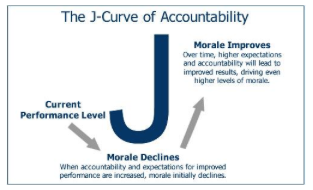Communication, Employee Engagement, Executive Coaching, Leading Change
Effectively Leading Organizational Change, Part 3
leading an unwanted change
One of the most difficult challenges leaders need to accomplish is implementing a change that they are not in support of or a change that they know their direct reports are not going to be excited about incorporating into how they currently do their jobs. A couple of great examples where a leader may be required to implement these difficult changes are when a merger or acquisition occurs or when the leader receives a new boss. Almost always in these situations, leaders are required to implement significant changes to align to the organization.
Here are ten tips that will help you successfully implement a change when you or the employees in your workgroup are not excited about the change:
- Recognize the difference between agreement and support for the change.
We have learned that it is honest communication if a leader shares their concerns about implementing an upcoming change. What is not alright is for the leader to roadblock the change, either personally or through their direct reports. Honest communication is good. Outright or passive opposition will get you fired. - Create a positive vision for the implementation of the change.
If you cannot visualize a positive vision for the implementation of the change, then there is no hope that your direct reports will see the change as positive. Undergird your vision with clearly defined outcomes so everyone knows exactly what they are to do to implement the change. - Promise problems.
Most leaders want to tell people that the change is going to make everything better. A much better strategy is to tell your direct reports that, with the implementation of this change, there is going to be a ton of problems…but what excites you is that if any team can figure out the problems and solve them…this team can. - Involve your direct reports in developing a plan.
People don’t dislike change as much as they dislike being changed. Take the time to involve the people who will be responsible for implementing the change in the planning process…even your most difficult or challenging employees. - Over-communicate.
In times of change, more communication, not less, will help you successfully implement the change. Create a communication strategy to regularly keep everyone informed and up-to-date. - Provide training.
Training helps people learn new ways of doing things. But, it is important to remember that people, who do not want to change, do not like to attend training about the change either. The earlier training can be provided in the change process, the better; this will help people begin to see their ability to be successful. Then follow-up the training with a shortened session where people can get their questions answered or learn advanced skills. - Focus on results.
When it comes to significant change, leaders can get sidetracked and focus on how team members feel. The challenge is that most people do not feel excited and positive when they are being asked to make significant changes in how they do work or the amount of work they are being asked to do. To focus on morale is a mistake. Focus on the results you are trying to achieve by making the change. When people achieve positive results and the team is aligning to a world that is about to become, morale will take care of itself. - Remember the “J” Curve.
Whenever you make a change, remember that there is a good chance things will get worse…before they get better. It is what we refer to as riding the “J” curve of change. When you begin to hold employees accountable for implementing a change, it is important to remember that morale and productivity may go down before it rises to a higher level. When you start to implement a change and hold employees accountable for the results, some employees may become resentful. We have all heard employees tell us that the old way was better.
of change. When you begin to hold employees accountable for implementing a change, it is important to remember that morale and productivity may go down before it rises to a higher level. When you start to implement a change and hold employees accountable for the results, some employees may become resentful. We have all heard employees tell us that the old way was better. - Move fast.
All the research we have tells us that fast change is easier for an employee to deal with than slow change. Some organizations can implement a change in 24 hours. Other organizations take years to implement the same change. If you think employees enjoy slow change, than put a Band-Aid on the hairiest part of your arm and have someone pull it off…slowly, one hair at a time. Before long, you will want to yell at the individual to just yank if off. How much time do you have to implement your change, and remain the competitive force in the marketplace? - Keep the pressure on and celebrate success.
It is human nature to revert to the old, more comfortable way of doing things. Keep the pressure on employees to work at the new way of doing things and hold everyone accountable. Establish intermediary milestones and recognize people for achieving these goals. When the change is fully operational and producing desired results, take time to celebrate everyone involved in the change.
Being a great leader in search of the path that leads to workplace excellence is not for the faint of heart. Holding all employees accountable to clearly defined outcomes is hard work. With really difficult employees, it feels like a fight. Yet, implementing significant change and then riding onto the “J” for the entire ride, takes you one step closer to creating workplace excellence.
Follow us next week for more information on working with difficult employees in Effectively Leading Change: Part Four – What Shapes Our Attitude toward Change?











Leave a reply